How and Why Seattle’s Do-Gooders are Working to Create a Collaborative Community
Posted on August 4, 2011.
“I believe in synergy, the power of collaboration.” These are the words of Bill Clapp, active Seattle philanthropist fighting global poverty, who encourages collaboration between isolated social entrepreneurs so that they may improve the effectiveness and sustainability of their efforts.
On July 27, 2011, Tom Paulson published the first in a series of three articles addressing the opportunities and dangers in Seattle’s burgeoning humanitarian sector on Humanosphere, an online news source focused on the intertwining issues of global health and poverty.
In one article Tom Paulson looks at the influential role Bill Clapp has played in forming and supporting Seattle’s community of people focused on social change. Bill and Paula Clapp have launched or helped to launch several initiatives to promote and support this collaborative humanitarian community – the Seattle International Foundation, Global Washington, and the Initiative for Global Development. Tom Paulson points out that, while these organizations vary in their specific focuses, they all share the central goal of “bringing people together to figure out how to make the world a better place.”
Bill Clapp states that, while much of congress does not realize the practical importance of international development “to our country, to our business community and to improving all aspects of our society,” the Seattle community seems to have strongly grasped this. Over the past decade, this internationally orientated community has dramatically expanded, leading to the creation of hundreds of small organizations focused on global development. While this growing humanitarian sector means greater job opportunities and chances to “do well by doing good,” it also poses the issues of “a plethora of good (or maybe not-so-good) causes competing for funding,… redundancy, lack of clarity as to what really constitutes a “social enterprise,” lack of criteria for measuring success (or failure) and, overall,… not making the most of this opportunity due to lack of collaboration, of community.”
In another of Tom Paulson’s articles, he focuses on the recent collaborative efforts of the Seattle International Foundation, an organization that supports global poverty alleviation through grant-making, and Jolkona, a recent start-up that connects funders with small organizations engaging in meaningful causes. Using the online “deal of the day” website, Groupon, Jolkona fundraised $5,000, which the Seattle International Foundation matched, for iLEAP, an organization working on women’s empowerment. With this money, iLEAP was able to fund a fellowship for a woman working on social change. According to Maurico Vivero, executive director at Seattle International Foundation, “supporting women leaders working on issues of poverty and social empowerment is proven to be one of the most effective means for affecting change in power, or any, communities.” Through effective collaboration, the Seattle International Foundation, Jolkona, and iLEAP were able to quickly raise enough money to fund a fellowship for a woman leader creating positive social change.
The Seattle International Foundation awards grants to many other organizations like iLEAP, yet they are also forced to decline many other requests for support. While, in this region, there exist numerous good intentions to better the world, an effective, sustainable approach is not always taken. In keeping with Bill Clapp’s aim, Vivero says, “we want to bring all these people, and their causes, together and see what happens.”
In Tom Paulson’s last article, he looks at how a sense of community and collaboration between isolated individuals can be enhanced through the creation of a space where these individuals can convene. This is where The Hub comes in. The Hub says on its website:
“We believe that there is no absence of good ideas in the world. The problem is a crisis of access, scale, resources and impact. So it felt vital to create places around the world for accessing space, resources, connections, knowledge, experience and investment.”
Beginning in British Columbia and Europe, there are now currently three branches of The Hub in the U.S., two in San Francisco and one in Atlanta, and large support for the launch of The Hub here in Seattle. In addition to the efforts of Global Washington, the Seattle International Foundation, and the Initiative for Global Development to bring people together, The Hub may be able to further the creation of a community and its ability to collaborate.
As Seattle continues to grow as a center for international development work, organizations such as Global Washington, the Seattle International Foundation, and the Initiative for Global Development are “increasing accountability and improving effectiveness by building community,” establishing Seattle as a center for sustainable and meaningful international development work.
House of Representatives appropriations activity — State/Foreign Operations
Posted on August 3, 2011.
While much of the country and the world had been focused on whether or not the U.S. debt ceiling would be raised by August 2, the U.S. House of Representatives was continuing its work on discretionary funding for Fiscal Year 2012. The House Appropriations Committee’s Subcommittee on State/ Foreign Operations approved its version of the legislation, which would make deep cuts in State Department operations and foreign aid. While it is not surprising that the Republican-crafted bill includes deep cuts, Democrats such as Nina Lowey (D-NY) noted the impact that the legislation would have on mitigating the current famine in Africa. “This legislation would be a step back from U.S. leadership and substantially weaken the United States’ efforts overseas by decreasing economic opportunity, stability and access to critical services for millions of the world’s poorest people,” Lowey said.
The House subcommittee bill includes a total of $39.6 billion in regular discretionary funding, $8.6 billion or 18 per cent below last year’s level. In addition, the bill includes $7.6 billion for “Global War on Terror” funding, for a total of $47.2 billion.
New Leadership in Global Health–BRICS Health Ministers pledge support
Posted on August 1, 2011.
On July 11, 2011, Health Ministers from the BRICS countries—Brazil, Russia, India, China, and South Africa—came together in Beijing for the BRICS Health Ministers’ Meeting. The primary focus of the meeting was to discuss these countries’ role in providing wider access to quality and affordable health care around the world. The meeting concluded with the Health Ministers signing of the ‘Beijing Declaration,’ which called for collaboration with international health organizations, as well as with each other. These collaborations would hopefully yield the promotion of technology transfer and accessibility to “affordable, quality, efficacious, safe medical products and other health technologies” in developing countries. The Declaration also stressed the importance of reforming international organizations like WHO in order to improve transparency, efficiency, and accountability.
The Health Ministers collectively acknowledged the lack of access to health care and affordable medicine in their own countries, and recognized the benefit of this collaboration and technology transfer to significant portions of their populations. UNAIDS Executive Director Michel Sidibé, who also attended the Ministers’ Meeting, spoke to the unique position of BRICS nations of being “a voice with incredible economic, technological and innovative strength…[that is] intimately connected to the needs and interests of the developing world” (unaids.org).
The increasing economic power of the BRICS countries in the global economy does place them in an interesting, new arena of foreign aid. These five nations account for 40 percent of the world’s population, 18 percent of global trade, and 45 percent of current growth. However, in four out of five of the BRICS countries, two thirds of the people who need HIV treatment are not receiving it. Are these countries really in a position to bring about real, substantial change to the way health care is accessed in the world?
Sidibé says yes. “It will help us to change the course of debate on public health by bringing to the center the voice of the poorest segment of society by making sure that social justice and the redistribution of opportunities will become a major aspect of the way we deliver public goods to the people,” he says. South African Health Minister Dr. Aaron Motsoaledi stated that the BRICS countries could form a strong partnership with international health organizations because they are the ones that have the “most of the affordable drugs… to supply the developing world.” An example of this is the new meningitis conjugate vaccine developed by the Serum Institute of India, with an estimated cost of only 50 cents a dose. Because these countries share similar health care challenges in their own countries, they have the unique understanding of the problem of accessibility. This could yield a more informed and effective approach to efforts of improving health care systems worldwide.
In light of the recently approved legislation from the U.S. House of Representatives that proposes deep cuts to the foreign aid budget, the entrance of the BRICS nations into the foreign assistance arena could not come at a better time. As these countries seek greater influence in the global development community, the world could see a significant shift in how international aid is administered, and ultimately, what this means for the overall global economy. It is up to us to decide what the role of the U.S. will be in that change.
For more information on the first BRICS Health Ministers Meeting, go to <http://www.seattlepi.com/news/article/BRICS-countries-vow-to-help-poor-nations-in-health-1460626.php>.
A(nother) Guy Named Bill Creating Seattle’s Do-Gooder Community
Some of the most amazing people I know on this beat — covering Seattle’s role in global health and poverty reduction — are named Bill.
There’s Bill Gates, of course, his bold and insightful (and often funny) dad Bill Gates Sr., Bill Foege, the local doc who figured out how to beat smallpox, and then there’s Bill Clapp.
I can’t really quantify this, but I don’t think many would argue with me if I said that Bill Clapp has probably done more than any other single person (named Bill or not) over the years to try to promote the culture, the emerging community, of do-gooders in Seattle and throughout this region.
The Bill & Melinda Gates Foundation is the 8,000-lb gorilla on the scene today, of course. The Gates Foundation and its primary mission of global health tend to dominate the do-gooder conversation and media coverage.
But Clapp and his wife Paula were active philanthropists fighting poverty years before Bill and Melinda Gates got into the act — and well before most of us were really paying that much attention.
This is the second of three parts in a series aimed at how Seattle’s burgeoning humanitarian “sector” is coalescing, coming together. As noted in the first post, it’s a bit of a hodgepodge right now, with hundreds of groups working on their own, often unaware of others with shared interests and missions.
Moving from this creative chaos to community has long been one of Clapp’s primary aims.
“I believe in synergy, the power of collaboration,” he said.
He and Paula have launched or helped launch several initiatives aimed at creating this kind of synergy — the Seattle International Foundation (subject of my first post), Global Washington and the Initiative for Global Development.
Arguably, all of them are different means to the same end — bringing people together to figure out how to make the world a better place.
The great-grandson of the timber baron and Weyerhaeuser Co. co-founder Matthew Norton, Clapp has always been wealthy, business-minded and one of those old-school (moderate and reasonable) gang of Washington state Republicans like former Sen. Dan Evans. He certainly wasn’t always philanthropic.
As this Seattle Times article by Carol Ostrom quoted him describing his pre-philanthropy stage:
“I didn’t know what I wanted to be doing, because I hadn’t done anything socially redeeming, I guess you’d say, for most of my career, other than trying to do a good job at my work.”
A trip he and Paula took in the early 1990s to El Salvador changed all that.
Seattle had strong connections to El Salvador, Nicaragua and other Central American countries in part because we were a sanctuary city for many fleeing the numerous civil wars (some of them funded or supported by the U.S. government). In 1992, the Clapps were asked by some anti-poverty advocates to join them on a trip down south.
“I was just stunned, appalled really, to see what conditions were like down there,” Clapp said. “Just two hours outside of the U.S. and here were people living in shacks with dirt floors, in severe poverty.”
With the end of the conflict in El Salvador, he said, the U.S. government also apparently lost interest in sending any more money down there. The war had ravaged this tiny country but few were working to rebuild it.
That motivated the Clapps to move into microfinance, the anti-poverty scheme that involves giving small loans to poor people allowing them to grow their businesses or otherwise get themselves out of poverty. A year or so later, they started Global Partnerships, Seattle’s oldest and largest microfinance organization.
“We worked hard at this but eventually realized that much of what U.S. government was doing wasn’t supporting what we were trying to do, and was even sometimes at cross-purposes,” Clapp said. So he and some of those other old Republicans — Dan Evans, Bill Gates Sr., former Nixon EPA director Bill Ruckelshaus, etc. — launched the Initiative for Global Development.
“These were all people who understand, practically and not ideologically, why international development is important to our country, to our business community and to improving all aspects of our society,” Clapp said. Unfortunately, he added, many in Congress these days don’t seem to understand this.
“Our community has, for some reason, always been very aware of this,” Clapp said. “Historically, we were the first to open up trade with Japan, China and Russia. We took in a lot of refugees during the wars in Central America. There is something about this place.”
There always has been a strong international mindset here, Clapp said, and this has exploded in scope over the past decade.The Gates Foundation is highest-profile, he said, but there are literally hundreds of other small organizations — many of them launched by young “social entrepreneurs” — out there also trying to do their part.
What’s lacking, Clapp said, is a coherent community. The global health community has come together, he said, but global health really is just (or should be) a subset of development, of the fight against poverty. And the rest of the Seattle do-gooder community remains a bit fragmented, working in isolation.
“I would like to see other aspects of international development gain the same momentum global health has gained, thanks to the great work being done by the Gates Foundation,” Clapp said.
The Clapps are on a roll, creating organizations like Global Washington and the Seattle International Foundation, aimed helping support and grow what could someday become the world’s biggest community of do-gooders.
A(nother) Guy Named Bill Creating Seattle’s Do-Gooder Community
Tom Paulson | Humanosphere | July 29
July 2011 Newsletter
Welcome to the July 2011 issue of the Global Washington newsletter. If you would like to contact us directly, please email us.
IN THIS ISSUE
Note from our Executive Director
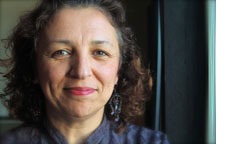
Greetings,
In this issue you will read an announcement about our new Career Center. By providing this critical resource, our goal is to continue to provide the tools you need to build your capacity. Global Washington continues to support the building of this sector by helping to mentor and build the skills of up to 20 interns during each quarter. We see a great deal of value in helping to support these future leaders of global development.
We will be working with academic institutions in Washington State to build our Career Center as a central clearing house for student interns. We will be getting consultant recommendations from member organizations to help you find highly capable professionals that you can work with. And we will also be offering a monthly discussion group for young people entering the field of international development.
The rest of this year will be very busy for the staff and interns of Global Washington as we prepare for the our upcoming third annual conference: Opportunities and Obstacles in Turbulent Times. Opportunities and Obstacles will build on the success of the previous years’ conferences. The first annual conference in 2009, A Blueprint for Action, convened over 300 people to build a strategy for collaborative work in the sector and discuss Global Washington’s role as a convening body. The 2010 Conference, Bridges To Breakthroughs: How Partnerships And Innovation Are Changing The World was attended by over 400 people and focused on new ideas and the role of cross-sector, cross-issue collaborative efforts in development work.
This year’s conference will explore the challenges and opportunities of development work in a world characterized by rapid innovation, political instability, and shifting priorities. Keynote speakers will include national experts on the role of development in the current geo-political climate and visionaries with innovative approaches to its most pressing challenges. Other conference sessions will focus on turbulent regions of the world, current trends in the field, and sector-specific innovations. The conference will also give select local organizations the opportunity to showcase their work and will provide all attendees with time to connect with each other and collectively brainstorm solutions to problems.
The annual conference is an important milestone in Global Washington’s work to convene, strengthen, and advocate on behalf of the global development sector in the state. Diverse players will find opportunities for collaboration and high-caliber speakers will provide valuable insight and the latest knowledge. All of this increases the impact of the work being done around the world, and enhances the reputation of Washington State as an international hub for innovative and effective development activity. Small and large organizations, businesses, government, academic institutions, and interested individuals are all encouraged to participate, joining our mission of working together to create a more equitable and prosperous world.
We hope to see you at some of our upcoming member meetings and look forward to your participation in our many programs and our annual conference.
In unity,

Bookda Gheisar, Executive Director
Featured Story
Global Washington Connects Members To Talented Professionals
Global Washington is thrilled to announce the launch of our new Careers in Development Center on our website. The Career Center is both an online job bank and comprehensive career resource center, which helps job seekers find work opportunities in the global development sector. It is also an important tool for our member organizations, connecting them to valuable candidates, volunteers, consultants and potential board members. Global Washington’s career center goes beyond the typical job bank by providing additional resources tailored for this sector, including salary ranges, educational information, and interviews with people working in the field. The Career Center is part of our larger focus this year on training young leaders to enter the global development field, thereby enriching our members and the sector as a whole by helping them find quality staff, volunteers, consultants, and board members.
As a statewide association for the global development sector, part of Global Washington’s vision is for our state to lead the way, both in institutional global development work and in the global and cultural competency of our workforce as a whole. We hope to see our state’s employees—in both the public and private sectors—set an example for how to successfully navigate the challenges of working in our globalized world. We also want to increase the impact of the important development work that Washington organizations are doing around the world, which will open up new jobs locally within these organizations, and will build stability abroad, thus creating new markets and better trade opportunities.
We feel that one of the best ways to accomplish this goal by helping the young people in our state develop into responsible global citizens and competent professionals in the international development field. Our new career center is just one of the ways that we hope to provide resources to these future leaders. Some additional projects we are working on include:
- Our Global Education Initiative: Washington State is already recognized as a world leader in many global arenas, including health, technology, and aerospace. To maintain and strengthen this position, we must prepare our K-20 students to be global citizens. Our vision is for Washington’s students to build critical skills and prepare for success as competent, knowledgeable global professionals and leaders in Washington State, nationally and internationally. We are achieving this vision by creating a comprehensive global education initiative for our state’s education system—from primary education through university— that will ensure that Washington students enter the workforce with the international and cultural skills that they need to thrive in a global community.
- As part of the Initiative, a Global Education Summit on November 18 at Seattle University will convene 200 policy and education leaders and global education practitioners to provide insight into the barriers and strengths of the state’s current global education offerings, gather feedback on draft policy recommendations, and create an advocacy plan.
- Global Washington Internships: Formal education is only the first step towards a successful career in the global development field. Global Washington is focusing special attention on young emerging leaders by providing up to 20 intern/volunteer positions each quarter to help students with a passion for global development gain real-world experience and exposure to the sector. Interns will have the opportunity to work in cross-discipline teams on exciting Global Washington projects and to develop relationships with each other and with our member organizations. For the bios of Global Washington’s current volunteers and interns, visit: Current Volunteers.
- Young Professional Networking: We are also launching a series of networking events for young professionals working in or hoping to work in the development sector. These “happy hour” style events will be led by Global Washington interns and will provide a peer-learning environment for participants to connect to each other. There will also be opportunities get advice from more experienced global development professionals on how to advance one’s career in this field. The first event will be held on July 27th at Earth and Ocean in downtown Seattle.
With this targeted programming, we hope to see the capacity of our member organizations increase through better access to interns and expertise. Our Career Center will increase the visibility and reputation of Washington State’s innovative and influential global development sector as we demonstrate the depth of the work being accomplished here. Finally, the collective power and knowledge of Washington’s global development sector will increase as we support the career development of young professionals and draw more talent and funding to our state. As our members and constituents, we encourage you to take advantage of some of these new resources we are offering!
Back to Top
Featured Organization:
Give2Cuba: A New Model For Engagement And Philanthropy
By Sandrine Espie
 Cuba’s economic and political systems have severely limited its development and greatly worsened the quality of life for average Cubans. U.S. donors and nonprofit organizations concerned about poverty in Cuba have faced a difficult path for engagement, given the complexity of U.S. laws and regulations governing relations with Cuba. This situation is further complicated by the fact Cuba has no real civil sector, since Cuban law limits freedom of expression and association. Because of these legal, operational and political barriers, philanthropy and giving for Cuba have been severely limited. One group, based in Seattle, is changing that and helping donors reach and support the people of Cuba.
Cuba’s economic and political systems have severely limited its development and greatly worsened the quality of life for average Cubans. U.S. donors and nonprofit organizations concerned about poverty in Cuba have faced a difficult path for engagement, given the complexity of U.S. laws and regulations governing relations with Cuba. This situation is further complicated by the fact Cuba has no real civil sector, since Cuban law limits freedom of expression and association. Because of these legal, operational and political barriers, philanthropy and giving for Cuba have been severely limited. One group, based in Seattle, is changing that and helping donors reach and support the people of Cuba.
Give2Cuba was started by a small group of Seattle residents, including Cuban-American Mauricio Vivero. His day job in philanthropy, and his love of country, inspired him to create Give2Cuba to create a new model for development work in Cuba. ”By definition, almost anything involving Cuba is legally and politically complicated. But, our contribution here is to give donors a simple, legal way to help meet the basic needs of people in Cuba,” said Mauricio.
Recently, there has been more direct contact between civil society in the U.S. and citizens in Cuba, but progress is slow. The Obama administration has been increasing the number of U.S. charities allowed to work in Cuba, and has removed certain barriers for travel and remittances. But U.S. groups still must receive special clearance from the Treasury Department to transfer funds or conduct work in Cuba.
For many donors, including many Cuban-Americans, this is just too much complexity. When considering philanthropy in Cuba, donors must carefully select a nonprofit with legal permission to work in Cuba, and also understand the limits inherent in working in Cuba, such as the barriers to travel to conduct a site visit. As a result, some donors may become discouraged and decide to focus their philanthropy in other countries. “I would suggest this complexity and need is a special opportunity for philanthropy. What could be more exciting than to help build civil society in Cuba from the ground up?” said Mauricio.
Mauricio was also inspired to think more about his homeland by a special gift from one of his board members. “One day I received this great painting of Cuba. I was so proud to hang it in my office, but after months of looking at it I said to myself: How can I work in philanthropy and not do something for Cuba. ”
Give2Cuba was launched in 2010, and has already received more than $20,000 in donations. After doing lots of research and talking to their donors, advisors, and development experts, the group decided to focus on the basic needs of Cuban citizens, such as hunger and freedom of expression. Give2Cuba is currently supporting a meals program for seniors, which provides a hot meal for 40,000 residents in Cuba. The group is also supporting a program to give young people in Cuba cell phones, to both encourage more direct communication with U.S. young people, as well as among youth in Cuba. ”It wasn’t too long ago cell phones were illegal in Cuba. The ability of people to communicate is very important,” added Mauricio. Most Cubans cannot afford the cost of a cell phone (about $40) since the average salary is $20 dollars a month.
Next year the group plans to support a shipment of medical supplies to Cuba, among other projects. To accomplish these goals, Give2Cuba needs to expand the numbers of donors, and work with larger foundations to scale up. “Our goal,” says Mauricio is to “broaden our network and increase interest and awareness about the need and opportunity for aid to Cuba.”
Managed by a small group of committed volunteers, the organization sees a promising future in Washington State. “People in Seattle and Washington State are very globally minded, generous, and open to discovering and engaging with different cultures. Seattle is a great place to start this work,” said Mauricio.
Although philanthropy in embargoed nations such as Cuba is challenging, Give2Cuba is making real progress by focusing on basic needs and partnering with donors passionate about improving lives in Cuba. For more information about Give2Cuba, email info@give2cuba.org
Back to Top
Changemaker:
Clean water, social justice, and sustainable business: Rick McKenney of Water for Humans
By Anamika Ved
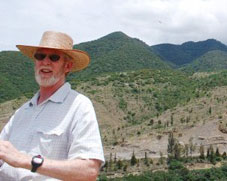 A social entrepreneur, mechanical engineer, a physicist, material scientist and a keen advocate of social and economic justice are few words that describe Rick McKenney, the cofounder of Water for Humans. Having started his career as a budding entrepreneur during his high school days, Rick’s passion for implementing social change eventually gave birth to the non profit social venture enterprise that is called “Water for Humans”.
A social entrepreneur, mechanical engineer, a physicist, material scientist and a keen advocate of social and economic justice are few words that describe Rick McKenney, the cofounder of Water for Humans. Having started his career as a budding entrepreneur during his high school days, Rick’s passion for implementing social change eventually gave birth to the non profit social venture enterprise that is called “Water for Humans”.
In 2006, while traveling in Mexico during the summer, Rick noticed the elderly struggling with water jugs, people getting drinking water out of five-gallon jugs and trucks carrying jugs of clean water. He realized that people understand the value of clean water; they recognize that drinking tap water can potentially lead to serious medical problems and even death. With multinational companies and other private enterprise mushrooming in the profitable business of potable water sales and distribution, Rick saw people spending 25% of their income on buying expensive bottled water. Those with less financial means were drinking water that was insufficiently treated and not safe for human consumption.
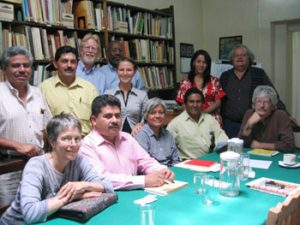 He also saw raw sewage flowing directly into the sea and onto farmers’ fields polluting the ocean and human consumption crops. With fields getting flooded by raw sewage, farmers could only grow animal feed commodity, which has less financial value than human consumption crops. His exposure to this socioeconomic reality made him decide to work towards saving people from the deleterious effects of these unsafe water and sanitation practices.
He also saw raw sewage flowing directly into the sea and onto farmers’ fields polluting the ocean and human consumption crops. With fields getting flooded by raw sewage, farmers could only grow animal feed commodity, which has less financial value than human consumption crops. His exposure to this socioeconomic reality made him decide to work towards saving people from the deleterious effects of these unsafe water and sanitation practices.
Born in Southern California, Rick was imbued with both the business and engineering skills to start a private enterprise. While in high school he started and successfully operated his own business, a small manufacturing outfit, before he sold it to pursue his undergraduate degree in Solid State Physics and Mechanical Engineering.
After working in military industrial complex where he was “conflicted by the lure of science and the application of technology,” he joined Boeing as physicist and materials scientist. During his eighteen years at Boeing, he worked on many classified projects; however, he wanted to do something in line with his core values. He wanted to give back to the society. As a first step, he went to Vancouver, B.C. and for four years worked at Ballard Power Systems developing hydrogen fuel cell technologies.
 Rick was interested in social entrepreneurship from social justice perspective. He wanted to use his engineering and business skills for environmental, economic and social causes. He wanted to do, as he says, “Business for good.” With that thought in mind, he joined Bainbridge Graduate Institute (BGI) in the fall of 2004 to get his MBA in Sustainable Business Practices in June 2007.
Rick was interested in social entrepreneurship from social justice perspective. He wanted to use his engineering and business skills for environmental, economic and social causes. He wanted to do, as he says, “Business for good.” With that thought in mind, he joined Bainbridge Graduate Institute (BGI) in the fall of 2004 to get his MBA in Sustainable Business Practices in June 2007.
According to Rick, it was the sustainability aspect of the MBA that lured him to join Bainbridge Graduate Institute. At BGI he learned how business could be a powerful force for social change. In studying political economics he was fascinated by the way that political realities clash with economic theory–the co-relation between wages and benefits and the social safety net or the co-relation between inflation and unemployment. He also studied social justice and business and started looking for some ideas relating to it.
In his effort to start a social enterprise for safe drinking water and sewage, Rick was greatly supported and encouraged by Gifford Pinchot, the co-founder of Bainbridge Graduate Institute. Gifford connected him to Paul Hudnut, a social entrepreneur and founder of Envirofit, an enterprise-based model that represents a more sustainable approach to tackling the global IAP/cook stoves problem.
Rick also drew inspiration from Fabio Rosa, a Brazilian social entrepreneur whose initiatives focused on rural electrification and the use of sustainable energy resources. Similar to Rosa’s “The Sunshines for All,” which delivered low cost electricity to millions of rural Brazilians, Rick decided to come up with what he calls “a reliable, low cost, culturally acceptable technical solution that could provide sustainable sewage treatment systems, and access to clean water.” This, he thought, would reduce pollution for people of all economic classes. He also understood the importance of providing a financial mechanism via a social venture enterprise. A social venture enterprise, according to him, was important to ensure that infrastructure, such as sewage treatment systems, have adequate financial resources to provide continuous operations and maintenance for areas where local governments do not have the capacity to deliver such services. This led to the birth of Water for Humans, a social enterprise that strives to insure local public control of water resources and the deployment of low cost water purification systems to the 1.1 billion people in the world who lack safe drinking water.
According to Rick, “the strength and vitality of a community is based on its ability to provide food security and economic vitality to its citizens.” In order to accomplish his vision to bring about social and economic justice, Rick wants to ensure the safety and quality of the local food sources and help local economies thrive.
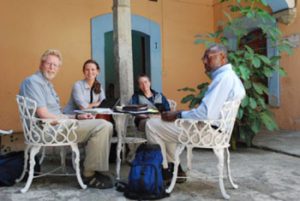 Rick also stresses on the importance of collaborative working model, which resonates with one of Global Washington’s four principles of aid effectiveness i.e, local ownership. According to Rick, collaboration or partnership with the local communities, NGOs, and government has been the mainstay of their organization’s success. “Strong and deep connections to key community partners have allowed us to grow and increase our impact,” he says. Their most recent project, aimed at designing and building a constructed wetland for sewage treatment in Santo Domingo Barrio Bajo Etla, is an example of such collaboration. In this endeavor, Water for Humans is partnering with a local internationally-recognized NGO, Instituto de la Naturaleza y la Sociedad de Oaxaca (INSO). The goal is to develop this watershed project 20Km NNE of Oaxaca City, as a model that communities throughout the world can study and emulate. In addition, they are also working on a rainwater catchment and water treatment, and composting latrine program within Oaxaca City. There many sections of Oaxaca City that do not have adequate water and sanitation services, and they are working hard with the community to implement a cost effective solution to this chronic water shortage issue.
Rick also stresses on the importance of collaborative working model, which resonates with one of Global Washington’s four principles of aid effectiveness i.e, local ownership. According to Rick, collaboration or partnership with the local communities, NGOs, and government has been the mainstay of their organization’s success. “Strong and deep connections to key community partners have allowed us to grow and increase our impact,” he says. Their most recent project, aimed at designing and building a constructed wetland for sewage treatment in Santo Domingo Barrio Bajo Etla, is an example of such collaboration. In this endeavor, Water for Humans is partnering with a local internationally-recognized NGO, Instituto de la Naturaleza y la Sociedad de Oaxaca (INSO). The goal is to develop this watershed project 20Km NNE of Oaxaca City, as a model that communities throughout the world can study and emulate. In addition, they are also working on a rainwater catchment and water treatment, and composting latrine program within Oaxaca City. There many sections of Oaxaca City that do not have adequate water and sanitation services, and they are working hard with the community to implement a cost effective solution to this chronic water shortage issue.
Rick emphasizes partnerships between small non-profit organizations and agencies like USAID and thinks that Global Washington can help make such connections. He appreciates the role played by Global Washington in increasing the “visibility of the member organizations.”
Excited about launching the first watershed project in the Oaxaca Valley, Rick continues to work towards implementing social change, using his scientific skills and strong belief in social and economic justice. Let’s wish him success in this laudable objective as he fulfills his dream to “affect people in the most positive way.”
Back to Top
Welcome New Members
Global Washington welcomes the following new member organizations. Please take a moment to familiarize yourself with these organizations and consider opportunities for collaboration and support. Together we are creating a unified voice for the development sector in the state and are working to build an equitable and prosperous world.
One by One
One by One was founded in 2005 with the singular mission of contributing to the elimination of fistula worldwide. We work to increase awareness and understanding of this deeply troubling condition that affects so many women. Additionally, we partner with in-country organizations to create programs and mobilize the resources needed to support both life-transforming treatment programs and essential prevention work. www.fightfistula.org
Solar Nexus International
Solar Nexus International is an international supplier of solar, wind and micro-hydro electric systems based on Orcas Island in Washington State. We work with NGOs, aid organizations and humanitarian groups to provide reliable solar electric power solutions. One of our key missions is to help improve the quality of solar power installations in the developing world and to drive economic growth by strengthening the local solar industries in the areas we serve. http://solarnexusinternational.com/index.php
Washington Basoga Association
The WBA’s objective is to advance the cultural, social and economic development of the Busoga region, in eastern Uganda. They focus on developing and implementing strategic projects to address socio-economic stagnation in Busoga, as well as identifying strategies to health problems, including promotion of HIV/AIDS prevention and support. http://busoga.org
Washington Economic Development Commission
The Washington State Economic Development Commission was created by the Legislature in 2003. Its mission and focus were updated by the Legislature in 2007, through SB 5995, to: “provide planning, coordination, evaluation, monitoring, and policy analysis and development for the state economic development system as a whole, and advice to the governor and legislature concerning the state economic development system.” http://www.wedc.wa.gov/
Individual Members
Jill Satran
Back to Top
Announcements
Global Happy Hour Adds Some Fun to the Job Search
Global Washington hosts the first of its monthly Global Happy Hour for young professionals (ages 18-35) currently working in or aspiring to connect to the global development field in Washington State. At each happy hour, participants can engage in facilitated discussions about careers in the field. Our first discussion will cover preparing for the job search and the job interview, and how to advance in your career once you have landed your job.
The happy hours will take place at various Seattle restaurants that cater to our target age range. Join us on Wednesday, July 27, from 4:30pm to 6:00pm at Earth & Ocean (1112 Fourth Avenue, Seattle, WA). No RSVP required. For additional career resources, visit our online career center at www.globalwa.org. For further information, contact megan@globalwa.org.
Make Aid Transparent Campaign Update
On July 7th, 2011, the Make Aid Transparent campaign, handed over its first petition during a meeting of the Organisation of Economic Cooperation and Development, in Paris, France. The campaign “calls on aid donors to publish more and better information about the aid they give, in line with the international standard.” Karin Christensen, Director of Publish What You Fund, and Tony Tujan, Chair of Better Aid, presented the petition, fashioned as an over-sized blue greeting card, to the working party’s co-chairs, Bert Koenders and Talaat Abdel Malek, along with Brian Atwood, Chair of the Development Assistance Committee.
The message on the front of the card exemplified the campaign’s message of transparency: “76 organisations and 5012 signatures from 115 countries, say Make Aid Transparent.” Koenders acknowledged that such a petition is exactly what is needed to promote the issue of increased transparency. At a later plenary session, Abdel Malek emphasized the “special urgency” this issue now has.
Prior to the handover, the campaign’s animation, which can be viewed at http://www.makeaidtransparent.org/ was screened before an audience of over 150 country delegates. A robust round of applause and requests for copies followed. The Make Aid Transparent campaign is planning to have more petition handovers this fall, including one in Busan, South Korea.
“Careers in Global Development Center”: Smart and Easy Way to Link in.
Consultants, volunteers, students, and members, are already benefiting from our Careers in Global Development Center, launched in early July, 2011. This easy-to-navigate web-tool is quickly becoming a leading resource to link mission-driven organizations with talented and passionate individuals. What you’ll find:
- For members: post your open positions, board member positions, and volunteer, internship and consultant opportunities. Search our bank of vetted consultants.
- For job seekers: search positions by subject and position, review volunteer opportunities, and learn more about your chosen field
- For students: track university programs in development and current scholarship opportunities.
For all of us engaged in global development, CGDC enriches our vibrant community and helps promote Washington State as a hub for innovative and influential development work. Visit our website today and find the Center under Resources. For questions please contact kate@globalwa.org or megan@globalwa.org
Humanitarian Innovation Fund opens 2nd call for proposals
The second call for proposals for the Humanitarian Innovation Fund (HIF) is now open!
The Humanitarian Innovation Fund supports organizations and individuals to identify, nurture and share innovative solutions to the challenges facing operational agencies in the delivery of effective humanitarian aid. The ‘large grant facility’ provides funding to projects up to £150,000 and supports the development, implementation and testing of innovation. The ‘small grant facility’ offers project funding of up to £20,000and is open to proposals at any time.
The fund was created through a partnership between ELRHA (Enhancing Learning and Research for Humanitarian Assistance) and ALNAP (The Active Learning Network for Accountability and Performance in Humanitarian Action) and represents a collective effort to enhance the contribution of innovation to improving operational humanitarian performance at the field level.
The selection criteria are the following:
- Relevance / potential impact
- Approach / methodology
- Feasibility / effectiveness
- Team composition / capacity to implement
Deadline for applications:
- Small grant proposals can be submitted at any time until 15th February 2012.
- Large grant applicants will be required to submit an expression of interest by 28th August 2011. Shortlisted applicants will then be invited to complete a full application by 16th October 2011.
Click here for more information about the funding process. To learn more about last year’s funded projects, click here.
Prosthetics Outreach Foundation Walkathon
Prosthetics Outreach Foundation, a Global Washington member, seeks to improve the mobility and independence of physically disabled children and adults in developing countries. POF invites you to their Make Strides Walkathon on September 24th. It will be held at Marymoor Park in Redmond and will feature games, yoga, contests, prizes, live music, and refreshments. For more information visit: https://pofsea.ejoinme.org/2011Walk. If you are interested in being a sponsor or volunteering for the event, Contact Development Associate, Melissa Winter, at 206-726-1636 or mwinter@pofsea.org.
Oxfam offers free training for Oxfam supporters in the Seattle area
Participants will learn about the GROW campaign, practice some important grassroots advocacy skills, and make plans to address global hunger through action with Oxfam Action Corps in Seattle. Feel free to bring a friend who is equally committed to fighting hunger and poverty. The training is on Saturday, August 6thfrom 1:00-4:00pm. At noon an optional lunch will be offered, with tasty food and a chance to chat informally.
Location: The Gallery, (2nd floor “Owner’s Lounge”), 2911 2nd Ave, Seattle, WA 98121
Cost: Free. The training and lunch are both free of charge. Bring yourself and come ready to participate!
RSVP: RSVP to brawson@oxfamamerica.org. Specify whether you will attend the optional lunch and if you have any dietary restrictions. Please be sure any interested friends do the same!
Back to Top
Global Washington Events:
Wednesday, July 27
GW Event: Young Professionals Global Happy Hour
Tuesday, August 9
GW EVENT: The Dark Side of ICT
Back to Top
Other Events:
Friday, July 22
THE POWER OF ART: Building Creative Capital through Community Mosaics
Vaccines: The Global Health Miracle
Saturday, July 23
The US-Japan Social Innovation Forum – Panel Discussion & Reception
Monday, July 25
The US-Japan Social Innovation Forum – Social Enterprise Happy Hour
Tuesday, July 26
Doctors Without Borders: Recruitment Information Session Seattle
Thursday, July 28
“Mojitos Against Mosquitoes” – Uganda Village Project
Saturday, July 30
Annual Garden Party – Days for Girls International
Tuesday, August 23 & 24
VIP Forum with Merck Global Health Innovation
Contributors: Bookda Gheisar, Megan Boucher, Carolyn Hubbard, Anamika Ved, and Sandrine Espie
Back to Top
Moldova and Europe: Change, Diversity, and the Future
“What is the strongest integrating force for this young country?”
This question, posed by an audience member, was one in a flurry of audience participation at an event to discuss post-Soviet countries with Global Washington member and volunteer, Liuba Ceban. Ceban, a native Moldovan and Hubert H. Humphrey Fellow, answered that there isn’t necessarily a single uniting force for the young country. She explained that within the country, some people desire to reintegrate with Romania while others wish Moldova to be a prosperous nation of its own. The country is equally divided on matters of allegiance; arguments often erupt as to whether Moldova was better off under Soviet occupation and whether the country’s current trajectory towards EU membership is wise. Ceban closed the question with a resolute “it’s too soon to tell where the country will end up.”
It’s safe to say that little Moldova has been going through a lot of changes. The country, which historically has been primarily agrarian, has a mushrooming IT industry whose brisk pace left even Ceban surprised. She also mentioned the challenge that growing diversity will pose to Moldova. Today, the predominant faith is Christian Orthodox. But because of the country’s communist legacy, many other citizens still harbor resentment towards religion; the “biggest evil”, as it was sometimes called. Together with the very recent registration of Moldova’s Muslim community, these combating viewpoints have made the issue of religious freedom a very relevant one.
Ceban often returned to the theme “Eastern Europe cannot be thought of as a package.” The issue of religion is just one of many divergent points between the Eastern Europe states. Belarus, a country to the north of Moldova, has political freedom of religion but some intolerance among the community. Ukraine is even freer religiously, and Ceban attributed that to the previous leadership of the country’s more pro-EU policies and agenda. Moldova is also the only former soviet country with a strong, intact Communist party.
Ultimately, the message that Ceban brought to the discussion was that with the diversity of opinions and backgrounds and the rapid pace of change in Moldova, there’s no telling where the post-Romanian post-Soviet country will end up. But the country’s journey cannot be grouped with Lithuania, Latvia, Estonia, Belarus, and Ukraine, as if they all come from identical history and culture.
Liuba Ceban started a nonprofit called WIN (Worldwide Initiatives Network) Moldova alongside former Peace Corps volunteers, whose goal is to promote partnerships for sustainable change and development in Moldova and to work with at risk children. The institution will be running a promotional event on July 6th from 6:00pm to 8:00pm at the Watertown Hotel, 4242 Roosevelt Way NE Seattle, WA 98105.
Global Washington Continues Series on the Role of Tech in Development
Hope or Hype? Mobile Phones & Development
In South Africa, human milk banks are a critical component to combatting HIV transmission from mother to child. At these milk banks, staff heat a mother’s milk to a specific temperature, removing HIV from the milk without destroying antibodies critical for babies. While many urban milk banks have sophisticated systems to ensure milk is consistently heated to this critical temperature, rural milk banks often don’t have the resources to be so exact. This is the sort of problem that Gaetano Borriello, a faculty member of the computer science and technology department at the University of Washington, tackles with technology. Using temperature monitors in rural milk banks, Borriello and his team build censors that connect to cell phones. The censors send temperature information to a central quality assurance manager who monitors the heating graph and sends an “approval” back to the rural milk bank – again via cell phone – that the milk is safe for infant consumption.
Borriello was one of three panel members at a recent event, the second in Global Washington’s series on the role of technology in global development. This panel consisted of three experts in technology from diverse backgrounds and perspectives: Kentaro Toyama from UC Berkeley and formerly with Microsoft’s India program; David Edelstein from Grameen Foundation’s Technology Center; and Gaetano Borriello from UW. Each panel member discussed his experience in using technology in global development as well as his thoughts on the successes and failures of those attempting to use technology in this way.
Technology can deliver information to a wider audience and allow organizations to track and revise programs in real time but must be adapted to the needs of developing countries
Borriello began by discussing the role of mobile devices in “provid[ing] an opportunity to deliver educational information and decision support to a wider circle of more lightly trained workers.” However, he cautions, “consumer devices need to be adapted to the needs of lower income countries…usage models and business models may differ greatly from one context to another.” For example, with the increased availability of smart phones in developing countries, desktops – particularly in rural areas – are not desirable.
Edelstein discussed the role of technology in disseminating and collecting information via a trusted intermediary with an illustration of a Grameen Foundation program in Uganda. In this program, community knowledge workers – the trusted intermediary in this context – are able to provide information on agriculture to rural farmers. In one visit to a rural farmer whose chickens were diseased, a community knowledge worker was able to input the chicken’s symptoms into a database on her smart phone, diagnose the disease and get information on local, low-cost mechanisms to cure the chickens.
Community health workers, armed with this smart phone technology, are also able to provide the Grameen Foundation with real time data, which allows Foundation staff to track and revise their project as they go.
“Technology only amplifies human intent and capacity”
Kentaro Toyama stressed his conclusion that “technology only amplifies human intent and capacity.” For more on Toyama’s thoughts on the pros and cons of technology, see an earlier post on a previous presentation Toyama gave to Global Washington members. Toyama asked Global Washington audience members a question to illustrate this point: If Bill Gates and a rural Indian farmer were both given the same smart phone and 24 hours to raise as much money as possible for vaccines, who would raise the most money? The audience agreed with Toyama that Gates would far surpass the farmer. Why? Because smart phones are only a tool which amplify Gates’ wealthier contacts and his experience in fundraising.
How one program can be an example of both good and bad technology use in global development
Following the presentation, Global Washington Executive Director Bookda Gheiser opened the audience discussion with a request that each speaker highlight a good and bad example of mobile technology use in global development work. Among other examples given, Toyama discussed an example that showed both the good and bad sides of technology. A Catholic Relief Services project in Niger, aimed at improving adult literacy via a two year program with eight months of adult literacy education, showed that those in the program who used SMS service progressed further. This was an example of technology as a tool to positively impact global development. But, Toyama cautioned, this can quickly be flipped to a negative example of technology if other global development programs take away the message that “mobile phones help with adult literacy.” This, in fact, was not the case. Toyama argues that without the critical services of Catholic Relief Services and its entire literacy program, one could not replicate the literacy results, regardless of the technology used.
“Key ingredients” for successful technology use in global development
The event closed with each panel member addressing a Global Washington member’s question on the “recipe” for successful use of technology in global development. “Key ingredients” include:
-
– Consider the long-term business model and sustainability plan for the technology’s use
- – Understand the target user and their needs
- – Ensure the ability to continually tweak projects based upon real time results
- – Always be in the field or closely connected to those working in the field
- – Understand the effect of the program with the technology as compared to the program without the technology
- – Align with programs and organizations that have end goals focused on development, versus technology
Global Washington’s mission is to convene, advocate, and strengthen the international development sector in Washington State, with an emphasis on the sectors of Global Health, Global Education, Environmental Sustainability, and Poverty Alleviation. In this role, Global Washington brings together its members and the community to discuss critical global topics.. Consider attending the next event in Global Washington’s technology series with Kentaro Toyama, “The Dark Side of ICT” on August 9th. You can sign up at globalwa.org.
Written by Bridgette Greenhaw
Global Washington Workshop on Results-Based Management
Nonprofit organizations often have multiple stakeholders and a set of goals and expectations that are challenging to fulfill. To help Global Washington members and others make sense of this complex landscape, Global Washington sponsored a Nonprofit Management Workshop on June 17 at the Global Washington office.
At the day-long workshop, Oscar Luna of Spinnaker Business Consulting and Dr. Thomas E. Byers of Washington State University first introduced the concept of results-based management, a strategy focusing on performance and the achievement of outputs, outcomes, and impacts. They then led the 16 participants through hands-on exercises related to developing a budget and a monitoring/ evaluation plan using tools that participants could later tailor to their own needs. The presenters offered a follow-up individual discussion with any of the participants as they incorporate the tools into their own organizations.
Global Washington is committed to strengthening our member organizations, in part by providing high-quality workshops like this one. As we continue to build up the capacity of the state’s international development community, we plan to offer more trainings and useful resources to which small and mid-sized NGOs typically lack access. Keep checking our website for the latest presentations and trainings, or email admin@globalwa.org to be put on our email list.
June 2011 Newsletter
Welcome to the June 2011 issue of the Global Washington newsletter. If you would like to contact us directly, please email us.
IN THIS ISSUE
Note from our Executive Director

Greetings,
Happy first day of summer to all of you! I hope that you will be able to take some time to enjoy the beautiful and long days of summer.
We at Global Washington are very busy with some wonderful projects. In this issue you will read an announcement about our new Career Center. By providing this critical resource, our goal is to continue to provide the tools you need to build your capacity. We will be working with academic institutions in Washington State to build our Career Center as a central clearing house for student interns. We will be getting consultant recommendations from member organizations to help youfind highly capable professionals that you can work with. And we will also be offering a monthly discussion group for young people entering the field of international development.
I am also happy to tell you that our fantastic conference planning committee is already working hard on our upcoming third annual conference: Opportunities and Obstacles in Turbulent Times. This year’s conference is again hosted by Microsoft and will be held on October 31st and November 1st. The conference will convene top policymakers and thought leaders to explore how our region can best harness our resources to tackle some of today’s most challenging issues.
This year we are also planning a one-day Summit on Global Education, which will take place on November 18th, hosted by Seattle University. The Summit will bring together Washington State’s vibrant international education community, including: academic institutions, non-profit organizations, businesses, policy makers, and global education practitioners and supporters. Participants will learn about innovative global education projects throughout our state and provide critical feedback to Global Washington regarding the successes, deficits, and potential solutions surrounding international education in the State of Washington. The final goal of the Summit is to develop recommendations that support your work for international education and improve our state’s education system as a whole.
We hope to see you at some of our upcoming member meetings and look forward to your participation in our many programs and our annual conference.
In unity,

Bookda Gheisar, Executive Director
Featured Story
Global Washington Launches New “Careers in Global Development Center”!
Does your mission-driven organization have a job opening and need to connect with talented and passionate applicants? Are you a new graduate, wondering how launch your career in global development? Does your start-up nonprofit need a consultant for a special project or extra volunteer support? If you answered yes to any of these questions, Global Washington’s latest web-tool might be the resource that you need.
Our Careers in Global Development Center connects prospective job seekers, interns, volunteers, board members, and consultants to positions with our member organizations. Members can post paid positions, as well as internships, board member positions, and consultant opportunities, and search Global Washington’s bank of consultants. Interested applicants can connect with local jobs and volunteer and internship positions. The general public can find out about undergraduate and graduate programs and scholarship information; access interviews with those in the field of international development; research annual salary trends; and find current articles, studies, and related literature.
Part of our mission is to promote the vibrant development community in Washington, putting our state on the map as a hub for innovative and influential development work. We hope that our career center will not only be an important tool for you, but will also further this mission by showing the depth of the work being done in this sector and drawing more talent and funding to our state. We are excited to announce this new service–one that is sure to enrich all those interested and engaged in global development!
This new tool will be launched on our website in early July. Keep your eyes open for an email announcing its formal launch! For questions please contact kate@globalwa.org or megan@globalwa.org
Featured Organization: SightLife
Providing the everyday miracle of restoring sight
By Carolyn Hubbard
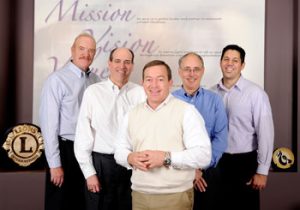 If you had corneal blindness, as over 10 million people in developing countries do, your eyes would have a cloudy cast to them and your vision would be limited only to vague shapes, making everyday activities difficult and work impossible. You could see again, if you had access to a qualified eye bank that could replace your cornea (the thin, clear tissue at the surface of your eye that lets the light in and allows you to focus) with one from a donor. But in countries with the highest levels of corneal diseases, finding an eye bank to supply a cornea is no small feat.
If you had corneal blindness, as over 10 million people in developing countries do, your eyes would have a cloudy cast to them and your vision would be limited only to vague shapes, making everyday activities difficult and work impossible. You could see again, if you had access to a qualified eye bank that could replace your cornea (the thin, clear tissue at the surface of your eye that lets the light in and allows you to focus) with one from a donor. But in countries with the highest levels of corneal diseases, finding an eye bank to supply a cornea is no small feat.
Having restored vision is an unattainable dream for many with corneal blindness, but the Seattle-based organization, SightLife, is changing the dream to a reality. As President and CEO, Monty Montoya explains, “We are singularly focused on eliminating corneal blindness on a global scale.” Founded in 1969 under the auspices of the Lions Club, the Northwest Lions Eye Bank (as SightLife was then known) grew to become the leading eye bank for the western United States.
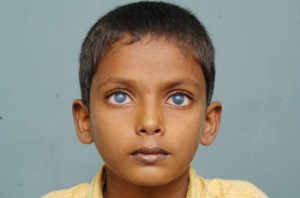 Eye banks retrieve corneal tissue from eye donors, assess and store the tissue, then ready it for distribution to recipients suffering from corneal diseases. From their Seattle offices and technical laboratory, SightLife will harvest some 5,700 transplantable corneas this year, from which they will first fill local requests, then those from nearby states. SightLife has also been a main distributor to Japan, a program which earned them the prestigious US Department of Commerce Export Achievement Certificate in 2003. With their efficiency and successful systems, they have a surplus of corneas, which they send to eye banks in other countries. India, ranking highest in corneal blindness, has been SightLife’s main focus since 2009.
Eye banks retrieve corneal tissue from eye donors, assess and store the tissue, then ready it for distribution to recipients suffering from corneal diseases. From their Seattle offices and technical laboratory, SightLife will harvest some 5,700 transplantable corneas this year, from which they will first fill local requests, then those from nearby states. SightLife has also been a main distributor to Japan, a program which earned them the prestigious US Department of Commerce Export Achievement Certificate in 2003. With their efficiency and successful systems, they have a surplus of corneas, which they send to eye banks in other countries. India, ranking highest in corneal blindness, has been SightLife’s main focus since 2009.
“We’ve essentially grown out of a very local mission of providing 40 corneas a year and are now rapidly expanding that mission,” explains Montoya, citing that now in one year they provide 10,000 transplants globally. But they aren’t stopping there.
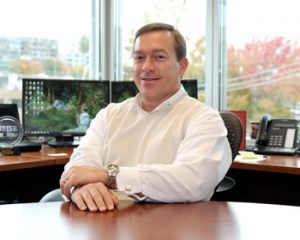 To lead the global expansion, SightLife brought in Tim Schottman, former Director, Global Strategy for Starbucks, now the Chief Global Officer, and Scott Garrepy, former Director of Development for International Programs at Washington State University, now the Chief Development Officer. They developed a franchising model, dubbed the “Eye Bank in a Box”—a complete start-up and operating system that can be easily replicated in-country.
To lead the global expansion, SightLife brought in Tim Schottman, former Director, Global Strategy for Starbucks, now the Chief Global Officer, and Scott Garrepy, former Director of Development for International Programs at Washington State University, now the Chief Development Officer. They developed a franchising model, dubbed the “Eye Bank in a Box”—a complete start-up and operating system that can be easily replicated in-country.
Within this model, SightLife provides selected in-country eye banks equipment, technical training and expertise, and ongoing support, including a three-week training fellowship at SightLife’s Seattle office. Montoya sees this ‘teaching them to fish’ model as creating a network capable of exponential growth, and ultimately the eradication of corneal blindness.
In India alone, SightLife has partnered with nine eye banks throughout the country so far. The Eye Bank Society of Rajasthan, in Jaipur, has grown from 219 transplants in 2009 to almost twice that amount just a year later. This year, under the continued management of Rakhi Nathawat, they will leap again to 622 transplanted. And that’s just one facility. Other countries now benefiting from SightLife’s model are Nepal, Paraguay, Ethiopia, and Vietnam.
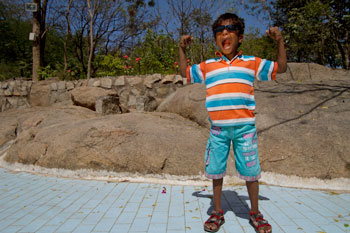 Such rapid expansion is not without its challenges. “We deal with the same challenges of any business that is scaling,” Montoya explains, from managing international managers to intricacies of global distribution. They also have more unique challenges of changing cultural attitudes towards organ donation, which SightLife’s many years of bereavement care and donor counseling can help encourage.
Such rapid expansion is not without its challenges. “We deal with the same challenges of any business that is scaling,” Montoya explains, from managing international managers to intricacies of global distribution. They also have more unique challenges of changing cultural attitudes towards organ donation, which SightLife’s many years of bereavement care and donor counseling can help encourage.
Additionally, their ambitious program is taking SightLife into the often-challenging world of fundraising. With a current annual revenue of $14 million, SightLife hasn’t needed to fundraise until now. Montoya recognizes that this is a new arena for them. But he’s not concerned about how to bring awareness to his cause in such a crowded field. “What we represent is a very finite solvable global health problem. This is a problem that people can get their minds around and see the end of.”
Collaboration with Greater Seattle’s global health community is also helping SightLife find its feet in the world of international development. Alongside awards and framed articles on a wall in their modern offices, hangs a map labeled with the area’s global health organizations. Montoya emphasizes how proud SightLife is to be a part of this map. “The global health community provides the soil to allow us to fully grow our mission and vision to reality.”
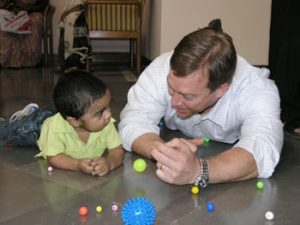 Montoya is aware of the need to stay true to their mission. “As you scale, you can be tempted to lose focus,” he states. But if the conviction and passion the staff has towards their mission is any indication, there’s no concern of ‘mission creep.’ Having such dedicated staff is just one more feather in the cap for SightLife, which has been named one of the top 50 nonprofit places to work by Nonprofit Times for two consecutive years.
Montoya is aware of the need to stay true to their mission. “As you scale, you can be tempted to lose focus,” he states. But if the conviction and passion the staff has towards their mission is any indication, there’s no concern of ‘mission creep.’ Having such dedicated staff is just one more feather in the cap for SightLife, which has been named one of the top 50 nonprofit places to work by Nonprofit Times for two consecutive years.
Montoya isn’t letting the accolades distract him. His passion and determination are palpable as he remembers the too-many times he has had to turn a young child away from a possible transplant. “When you’re a blind child, your life expectancy is less than two years,” he remarks, reiterating the importance of expanding to reach as many people suffering from corneal blindness as quickly as possible. “SightLife isn’t just helping blind people see; it’s saving lives.”
Photos courtesy of SightLife
Back to Top
Changemaker
Beryl Cheal:
An Educator’s Mission for Disaster Relief
By Carolyn Hubbard
For Beryl Cheal, retirement has meant anything but slowing down. After more than 40 years working as an educator and administrator, completing two masters degrees, working in the Gaza Strip, and serving in two separate Peace Corps placements, Cheal founded Disaster Training International, an organization that “helps adults help children who are living with the threat, existence, and aftermath of disasters.”
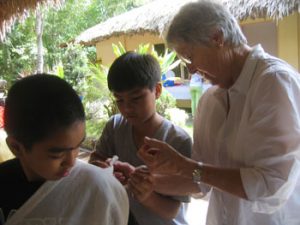 Cheal grew up in the woods of Southern Oregon, very poor, with no electricity, and looked down upon by peers. Despite the economic hardship, her parents encouraged her education. “[They] never talked about if we were going to college, it was when,” she reflected. This respect for education and her experience growing up in adversity became some of the building blocks of Beryl’s successful career as an educator and an advocate. She has taught preschool up to college levels and developed, directed and supervised Head Start and childcare programs in King County. When she retired from her position with Head Start, she took a job directing a kindergarten system for Palestinian refugee camps in the Gaza Strip, a destination she knew little about. After two influential years there, she came back to the States, received a masters degree in Middle Eastern studies, and went back to continue working on their education systems.
Cheal grew up in the woods of Southern Oregon, very poor, with no electricity, and looked down upon by peers. Despite the economic hardship, her parents encouraged her education. “[They] never talked about if we were going to college, it was when,” she reflected. This respect for education and her experience growing up in adversity became some of the building blocks of Beryl’s successful career as an educator and an advocate. She has taught preschool up to college levels and developed, directed and supervised Head Start and childcare programs in King County. When she retired from her position with Head Start, she took a job directing a kindergarten system for Palestinian refugee camps in the Gaza Strip, a destination she knew little about. After two influential years there, she came back to the States, received a masters degree in Middle Eastern studies, and went back to continue working on their education systems.
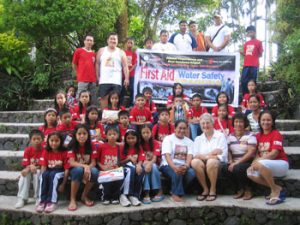 Cheal was sixty-five when Children’s Disaster Services asked her to fly to New York and help kids during the days following the 9/11 terrorist attacks. Beryl remembers playing with one rough-and-tumble eight-year old who kept messing up other kids’ games. At first he was guarded, but later opened up to Cheal. He pulled a piece of gum out of his pocket and offered it to her, saying “Take it. I’ve never had a friend before.” In that moment, Cheal recalled how deeply moved she is by kids dealing with trauma, and made the commitment to make sure that “the kids who have been traumatized, who have lost faith in the world, can say ‘maybe there will be tomorrow.’ ”
Cheal was sixty-five when Children’s Disaster Services asked her to fly to New York and help kids during the days following the 9/11 terrorist attacks. Beryl remembers playing with one rough-and-tumble eight-year old who kept messing up other kids’ games. At first he was guarded, but later opened up to Cheal. He pulled a piece of gum out of his pocket and offered it to her, saying “Take it. I’ve never had a friend before.” In that moment, Cheal recalled how deeply moved she is by kids dealing with trauma, and made the commitment to make sure that “the kids who have been traumatized, who have lost faith in the world, can say ‘maybe there will be tomorrow.’ ”
Rather than returning home to Seattle, she stayed in New York for two and a half years to train childcare directors and school staff on working with traumatized kids. After funding was cut for the program she was working on, she joined the Peace Corps. She worked in Moldova for two years, went back to New York, took a certificate course in international trauma studies at Columbia University, and then moved back to Seattle. She then joined the Peace Corps again–this time to the Philippines. Her dedication to volunteering had not gone unnoticed, and in 2007, Cheal was presented the President’s Call to Service Award.
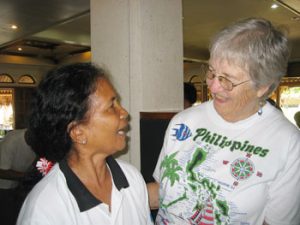 In the Philippines she worked for six months as a school-based disaster risk reduction technical officer. In other words, she helped schools learn how to prepare for natural disasters. A few years earlier, two major typhoons had hit the area where Cheal was living and one of the most active volcanoes had erupted, killing 1300 people in nearby villages. It was clear that there was a need to develop lessons to deal with natural disasters. Cheal developed disaster risk reduction competencies for all levels of elementary school, including model lesson plans for all grade levels in all subject areas, which are now part of the country’s curricula. “That was a really cool thing,” she recalls.
In the Philippines she worked for six months as a school-based disaster risk reduction technical officer. In other words, she helped schools learn how to prepare for natural disasters. A few years earlier, two major typhoons had hit the area where Cheal was living and one of the most active volcanoes had erupted, killing 1300 people in nearby villages. It was clear that there was a need to develop lessons to deal with natural disasters. Cheal developed disaster risk reduction competencies for all levels of elementary school, including model lesson plans for all grade levels in all subject areas, which are now part of the country’s curricula. “That was a really cool thing,” she recalls.
After taking a disaster training course, Beryl noticed that disaster trainings usually focus only on the immediate aftermath of a disaster, but lack content to help with the more lasting effects of trauma, whether it stems from disasters or abuse. “The approach needs to be much longer than two weeks. This should be in the schools, should be an approach that teachers can use with kids who have gone through difficult experiences,” says Cheal.
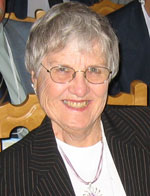 To fill this gap, she founded Disaster Training International, through which schools and individuals can request training or purchase manuals that Cheal has authored. The long-term vision is to set up a training institute for teachers working with children in trauma. “I’d like to have the headquarters in Seattle and then satellite locations around the world,” she explains fervently. She has already had requests from China and Nepal to attend her training sessions, but lack of funding has required her to turn down requests. For the moment, Cheal is financing and managing the organization on her own. “I have big ideas,” she says with a smile and twinkle in the eyes, but she sees how overwhelming the task of realizing those ideas can be. The need for support is one reason Cheal joined Global Washington, to network with people who are also just starting out and to create community. Global Washington has “their fingers on a lot of what is going on in terms of human needs,” Cheal observes. “The potential is huge – putting people together, offering training.”
To fill this gap, she founded Disaster Training International, through which schools and individuals can request training or purchase manuals that Cheal has authored. The long-term vision is to set up a training institute for teachers working with children in trauma. “I’d like to have the headquarters in Seattle and then satellite locations around the world,” she explains fervently. She has already had requests from China and Nepal to attend her training sessions, but lack of funding has required her to turn down requests. For the moment, Cheal is financing and managing the organization on her own. “I have big ideas,” she says with a smile and twinkle in the eyes, but she sees how overwhelming the task of realizing those ideas can be. The need for support is one reason Cheal joined Global Washington, to network with people who are also just starting out and to create community. Global Washington has “their fingers on a lot of what is going on in terms of human needs,” Cheal observes. “The potential is huge – putting people together, offering training.”
In the meantime, there’s work to be done and no slowing down. Cheal continues to volunteer with Children’s Disaster Services. This week, they wanted to send her to tornado-ravaged Joplin, Missouri, but she’s on call to work with kids after plane crashes. Let’s hope she has nothing to do.
Back to Top
Welcome New Members
Global Washington would like to welcome the new organizations that have become members in the last few months! Please take some time to familiarize yourself with these organizations and consider what opportunities there might be for collaboration and support. Together we are creating a unified voice for the development sector in the state and are working to build an equitable and prosperous world.
Living Earth Institute
The Living Earth Institute (LEI) is a Seattle-based non-profit 501(c)3 organization founded in 1999 to aid international communities in developing sustainable water resources. Their mission is: empowering communities to protect their health and environment through the sustainable use of water resources. http://www.livingearth.org/
GambiaHELP
Gambia Health Education Liaison Project exists to enable communities in The Gambia to protect, conserve and improve their health and the health of their community while building a sustainable economy and environment. www.gambiahelp.org
Community Health Africa a Poverty Solution
CHAPS is dedicated to easing poverty and suffering by supporting mobile clinics and remote healthcare providers in northern Kenya, http://www.communityhealthafrica.org/
Children’s International Health Relief
The mission of CIHR is to improve the health care of needy children throughout the world. http://www.childrenshealthrelief.org/
Disaster Training International
The mission of Disaster Training International is to help adults help children who are living with the threat, existence, and aftermath of disasters. We provide emergency preparedness, mitigation, disaster response and recovery training for adults who are responsible for the care, nurture, and well being of young children in disaster situations. http://disastertraining.info/index.htm
Nsansa, LLC
Nsansa advises and coaches change makers and innovators across the public, private and nonprofit sectors who are interested in innovation, design, market based solutions and collaborative approaches to realizing change. www.nsansa.org
Imaging the World
Imaging the World (ITW) is changing the face of global medicine through a revolutionary new concept integrating technology, volunteers and education to bring medical expertise and high quality health care to remote and under-served areas worldwide. http://imagingtheworld.org/
Jet City Stove Works
Jet City Stove Works goal is to create an affordable, non-carbon burning stove that uses the seed of the Jatrophe plant, which is found throughout Africa and other areas in the Southern hemisphere. Moving cooking from an unhealthy daily experience to a healthy, inexpensive alternative. http://jetcitystoveworks.com/default.aspx
World Connect
World Connect is dedicated to improving the health and well being of women and children in under-served and under-resourced communities worldwide. www.worldconnect-us.org
Washington Biotechnology & Biomedical Association (WBBA)
The Washington Biotechnology & Biomedical Association (WBBA) is an independent, non-profit 501(c)(6) trade association serving the life sciences industry in the state of Washington. Our members include organizations engaged in, or supportive of, research, development and commercialization of life science technologies. http://www.washbio.org
Individuals:
Michele Moore
George Nunes
Michael Kollins
Back to Top
Announcements
GiveBIG Campaign
On June 23rd The Seattle Foundation (TSF) held one of the biggest days of charitable giving in King County history with its GiveBIG Campaign. During this one-day, online event, residents of King County made donations to local nonprofits and The Seattle Foundation committed to matching a share of every contribution.
Support the international development community in Washington by continuing to give! You can donate to us or give to one of our members by searching for their profiles on TSF’s website.
To find out more about this campaign, visit The Seattle Foundation’s nonprofit GiveBIG blog.
MFAN Partner PWYF’s Aid Transparency Campaign
“Aid makes a real difference. It can save lives, put kids into school, and reduce poverty and suffering. But at the moment no one knows exactly how much money is being spent, where or on what.” To get the most out of aid, we must know where and how it is being allocated. This is why Publish What You Fund, a London-based group, launched The Global Campaign for Aid Transparency. Governments have promised to be more transparent in the past and at the High Level Forum on Aid Effectiveness in Korea in early December 2011 we have the chance to hold them accountable. Publish What You Fund is looking for organizations to sign a petition urging governments and other donors to make their aid more transparent. Global Washington has recently signed onto the petition and urges others to do the same. A public push for greater transparency now will make a huge difference. http://www.makeaidtransparent.org/
ONE Application that Could Change the World
ONE, a grassroots advocacy and campaigning organization that fights extreme poverty and preventable disease, has recently released an application for the iPhone that will enable individuals to become more effective activists in the fight against extreme poverty. The ONE app makes it easier to get the very latest news, sign and share petitions to world leaders, call, e-mail or tweet the President or your member of Congress, find and attend local events, and check out the latest Living Proof videos and stories. You can also easily engage and connect with your social network and recruit new people. That’s what truly makes this the ONE app that could change the world. Be one of the first to download it.
If you don’t have an iPhone, don’t worry. ONE will be launching this app on other mobile platforms later this year.
Richard’s Rwanda Founder Honored by Hasbro Community Action Heroes
On May 26th, six young people across the United States, ranging in age from 7 to 17, were honored as Hasbro Community Actions Heroes. The Hasbro Community Action Hero Awards are presented annually in partnership with generationOn, the youth service division of the Points of Light Institute, to recognize youth leaders committed to community service and volunteering. Each of the award winners embodies generationOn’s mission to inspire, equip and mobilize youth to take action that changes the world and themselves through service. Among those honored that night was Jessica Markowitz (age 15) from Seattle, Washington. A tireless advocate for global education and social justice, Jessica founded Richard’s Rwanda-IMPUHWE when she was 11 years old to support educational opportunities for young girls in the rural area of Nyamata, Rwanda. These awards are important because they recognize the inspiring and beneficial work young people are doing and show how any individual can become part of the solution to the world’s problems.
Landesa Welcomes New Chief Program Officer
Jolyne Sanjak, former managing director at Millennium Challenge, is joining Landesa to further the organization’s work promoting legal land rights for the world’s rural poor. According to the Landesa announcement, “Dr. Sanjak is one of the world’s foremost experts on how broad, secure land rights can spark sustainable economic development for individuals, families and communities. She brings to Landesa more than 20 years of technical and managerial experience. [She] worked as a specialist on land policy and rural development in USAID’s Bureau for Latin America and the Caribbean. Dr. Sanjak was formerly assistant professor of economics at the State University of New York at Albany. She holds a Ph.D. in agricultural economics with a specialization in development economics from the University of Wisconsin. She also holds a MS in agricultural economics from Penn State University.” Welcome Dr. Sanjak!
African Leaders Championing the Fight against HIV/AIDS
Thirty years have passed since the first recorded cases of HIV/AIDS, and though the epidemic continues in Sub-Saharan Africa, huge strides have been made in HIV education, treatment, and awareness. Join the World Affairs Council, the Washington Global Health Alliance, and His Excellency Mr. Festus Gontebanye Mogae, former President of Botswana and current Chairman of the Champions for an HIV-Free Generation on June 28 for a community discussion about what has been learned so far and how African leaders are working together to confront the epidemic. Co-presenters include: African Chamber of Commerce of the Pacific Northwest, CARE, Department of Global Health, University of Washington, Global Washington, International Training and Education Center for Health, Northwest Science Writers Association, School of Public Health, University of Washington, Washington Biotechnology & Biomedical Association, and Washington Global Health Alliance.
The event, African Leaders Championing the Fight against HIV/AIDS, takes place at Town Hall Seattle. Doors open at 6pm for an outreach fair and the event begins at 7pm. The price is $10 for World Affairs Council members, $15 for non-members, and $10 for students. Click here to find out more and register.
African Chamber of Commerce of the Pacific Northwest
The ACCPNW is hosting a luncheon of African cuisine with guest speaker Congressman Jim McDermott on June 28th, from 11:30 to 1:30pm at One Union Square Board Room. McDermott is co-author of the AGOA act and founder and chair of the congressional task force on international HIV/AIDS. At the luncheon, he will discuss current and future trade policies between the U.S. and Africa, and the National Export Initiative. The luncheon cost is $35. Please contact (206)256-6139 for more details.
“Basic” Accounting Workshop for Non-Profit Organizations
Clark Nuber, Certified Public Accountants and Consultants are holding three one-day workshops on July 12,13,and 14 focusing on non-profit accounting, taxes, and federal compliance. Workshops will include discussions and interactive group exercises. Cost is $295 per day, or $780 for all three days. Contact Clark Nuber for more information.
Global Partnerships Hosts Business of Hope Luncheon
Join Global Partnerships for their Ninth Annual Business of Hope Luncheon from 11:30am to 1:15pm on October 12 at the Westin Hotel Grand Ballroom. Community and business leaders will join together to recognize the work being done to bring people out of poverty and into self-sufficiency. Find out more and register here.
Global Washington Members Deliver Laptops to Japan
In March, Global Washington members InterConnection and Microsoft teamed up with Dell, HP and local volunteers to prepare and ship laptops to Japan to help with the relief effort from the earthquake and tsunami. These computers were sent to NGOs working on the ground in Japan to help them coordinate relief efforts after communication networks were severely disrupted by the disaster. Recipient organization included including Care, ChildFund Japan, Habitat for Humanity, International Federation of Red Cross and Red Crescent Societies, Japanese Red Cross, Mercy Corps/Peace Winds, Oxfam Japan, Plan International, Relief International and Save the Children. For more information, visit: http://blogs.technet.com/b/microsoftupblog/archive/2011/03/25/volunteers-deliver-laptops-to-support-relief-efforts-in-japan.aspx
Back to Top
Global Washington Events:
Wednesday, June 29th
Post-soviet European countries after 20 years of independence: same past, different destinies
Wednesday, July 6th
Global Washington Monthly Member Meet-Up
Back to Top
Other Events:
Wednesday, June 22
Microfinance & Microbrews: Advocating for Microfinance & Poverty Alleviation
Vaccines: The Global Health Miracle
Thursday, June 23
Save the date! His Excellency Ólafur Ragnar Grímsson, President of Iceland
Grassroots Organizing for Environmental Justice: A Global-Local Dialogue
Friday, June 24
Latin America Roundtable: Delegation from Piura Region, Peru
Tuesday, June 28
ACCPNW Luncheon with Congressman Jim McDermott
Global Leadership Series: African Leaders Championing the Fight against HIV/AIDS
Wednesday, June 29
The Importance of Trade and the US – Korea Free Trade Agreement
Tuesday, July 12
2011 USFLC Washington Conference, Investing in the Future: A Smart Power Approach to Global Leadership
Wednesday, July 13
2011 USFLC Washington Conference, Investing in the Future: A Smart Power Approach to Global Leadership
Wednesday, July 20
Grameen Foundation Breakfast: Building a Business Around Mobile Phones to Benefit Poor Farmers
Friday, July 22
Vaccines: The Global Health Miracle
Saturday, July 30
Annual Garden Party – Days for Girls International
Contributors: Megan Boucher, Nicola Castle-Bauer, Bookda Gheisar, Carolyn Hubbard, Jessica Leslie
Back to Top
Global Partnerships Named To List Of Top 50 Impact Investment Fund Managers
Global Partnerships Named To List Of Top 50 Impact Investment Fund Managers
Online press release
Seattle, Wash., – Global Partnerships (GP), a Seattle-based nonprofit that invests in microfinance and other sustainable poverty solutions, was selected in the inaugural ImpactAssets 50, a list of leading private debt and equity fund managers that deliver social and environmental value in addition to financial returns. The list was announced today.
“We are honored to be recognized as a leader among impact investors,” said Mark Coffey, chief investment officer for GP. “Inclusion in the ImpactAssets 50 is a testament to our strong track record as a fund manager, and our commitment to reaching underserved communities in Latin America with the most effective solutions.”
Since 2005, Global Partnerships has created four debt funds—ranging from $2 million to its most recent fund of $25 million—that provide affordable loans to a select portfolio of microfinance organizations and cooperatives, its partners. In identifying partners, GP prioritizes organizations that reach people most in need of credit, such as the rural poor, and which provide borrowers with not just microloans but “microfinance-plus” services such as preventive health care, business education and agricultural training.
“Impact investing” refers to investment vehicles built to solve the world’s most pressing social challenges, while offering investors social and financial returns. The ImpactAssets 50 is intended to help investors make sense of the expanding universe of impact investing, and will provide financial and impact information on each manager.
About Global Partnerships: Global Partnerships (GP) is a Seattle- and Managua-based nonprofit that expands opportunity for people living in poverty. As of March 31, 2011, GP had $40.2 million in capital invested in 28 exceptional microfinance partners in seven countries in Latin America, which together serve 880,000 borrowers. Find out more at www.globalpartnerships.org.
About ImpactAssets: ImpactAssets is a nonprofit financial services company created to help solve the world’s toughest problems by catalyzing investment capital for maximum environmental, social and financial impact. The ImpactAssets 50 is the first “open source,” publicly published list of private debt and equity impact investment fund managers and is intended to serve as a gateway into the world of impact investing for investors and their financial advisors. www.impactassets.org/impactassets-50/









 Such rapid expansion is not without its challenges. “We deal with the same challenges of any business that is scaling,” Montoya explains, from managing international managers to intricacies of global distribution. They also have more unique challenges of changing cultural attitudes towards organ donation, which SightLife’s many years of bereavement care and donor counseling can help encourage.
Such rapid expansion is not without its challenges. “We deal with the same challenges of any business that is scaling,” Montoya explains, from managing international managers to intricacies of global distribution. They also have more unique challenges of changing cultural attitudes towards organ donation, which SightLife’s many years of bereavement care and donor counseling can help encourage.



